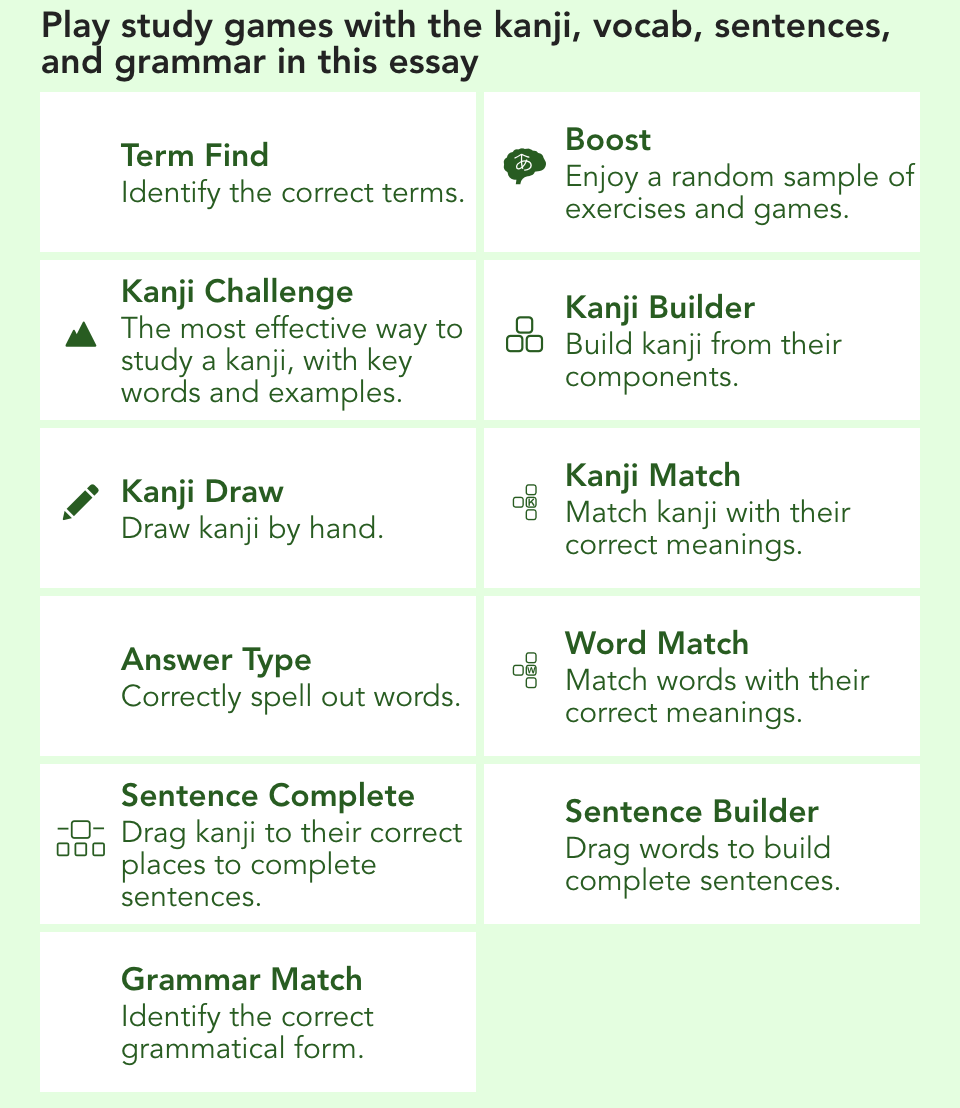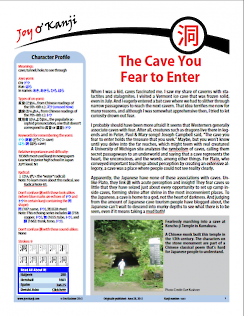洞
cave; tunnel; hole; to see through
Kanji 1661
cave; tunnel; hole; to see through
Thank you for visiting this Character Home Page. Below you'll find a synopsis of the essay. If you wish to read the full text, the PDF of the essay is available for purchase to the right.
Synopsis
Find out how the structure of 洞 reflects the process of forming a cave. Learn to talk about limestone caves, stalactites, and stalagmites. See how the Japanese have used caves for everything from shelter to religion. Discover how people use 洞 to discuss insightfulness and to describe a particular kind of loss. Enjoy several photos of Japanese caves, as well as kanji signs for those caves.
Revision history:
Mar. 22, 2024:
- p. 1 caption: Slightly revised my comment about the poem on the monument.
- p. 3: Slightly revised the translation of the monkey sentence.
- p. 4 sidebar: Deleted "somber" from the translation of the sample sentence.
- p. 10: Straightened both photos, changed the definition of 琴 from "harp" to "Japanese zither," and replaced the next-to-last link.
May 27, 2021:
- p. 2: Updated the Henshall etymology.
- p. 10: Reworked the caption about Iwaya Cave after removing broken links.
- p. 13: Added a link to the Kanshudo games.
June 28, 2013: Originally published.



Comments